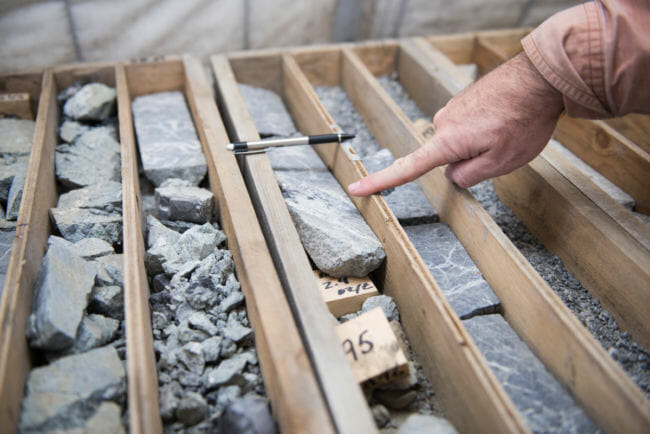
Cleaning up a mine is an expensive and time-consuming endeavor.
“We’ve learned from the past and advanced through the environmental review process,” said Dan Graham, who is in charge of Donlin Gold’s reclamation plans and permitting process.
Reclamation is relatively new in the long history of mining in the United States. It came into existence in the late 20th century as more information came to light over the damage that mining does to the environment. What it means is that mining companies must restore the patch of land that they mine. And according to Alaska law, they have to pay for it.
“So the state, TKC [The Kuskokwin Corporation] and Calista will not be on the hook to pay for the reclamation and closure,” said Andrea Gusty, the vice president of The Kuskokwim Corporation. TKC owns the surface rights to the proposed mine site, while the Calista Regional Native Corporation owns the subsurface rights. Both are major players in drafting the reclamation plan.
The reclamation plan and paying for it are separate, but they go hand-in-hand in Alaska. Both have to be approved by the Alaska Department of Environmental Conservation (DEC) and the Department of Natural Resources before the mine can move forward.
Donlin’s draft reclamation plan is more than 400 pages long. And it explains in detailed technical language how it plans to reclaim the mine site during operations and afterwards. The gold mine would permanently disturb about 3,500 acres of wetlands in the Yukon-Kuskokwim Delta and would permanently eliminate two salmon streams. It also requires big treatment facilities for the cyanide used during mining and the mercury that would be released from the rocks. And it has a tailings dam that is a mile long and a mile wide. All of that has to be cleaned up after the mine closes. So how is Donlin going to do that?
The reclamation process is divided into two phases: the physical phase and the water treatment phase after the mine closes. The physical reclamation process includes reseeding the patch of ground that is disturbed by mining operations; Graham says that the mine would try to use as much natural vegetation as possible.
A lot of the phsyical reclamation takes place while the mine is still operating and shortly after it closes. And then, once the mine shuts down, Donlin will divert the water it uses during operations into a pit lake and let it sit for about 50 years, after which Donlin will monitor the water indefinitely.
Donlin is the first mine in Alaska’s history to propose monitoring the water forever; usually mines have come to that decision during operations, according to Allan Nakanishi, DEC’s technical engineer in the Wastewater Discharge Authorization Program.
Closing the mine and monitoring is expensive. Donlin Gold estimates that the cost for the first phase of reclamation is $240 million. A second funding mechanism must be put in place to cover the water monitoring after the mine closes, Graham said. That funding mechanism will likely be a trust fund account that would be used to pay for the monitoring in perpetuity. That price tag is roughly $100 million.
But discussions around the trust fund are still ongoing, and the mine can’t move ahead until the issue is settled. Meanwhile, Donlin Gold has already received three major permits from federal and state agencies this month. The company expects to have most of the major permits out of the way this year.
